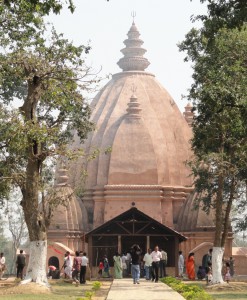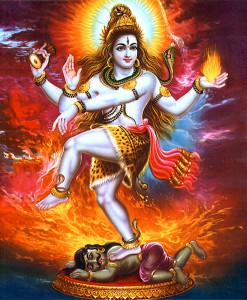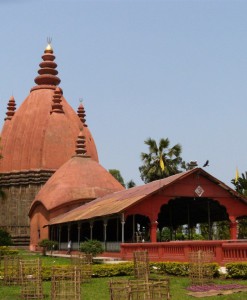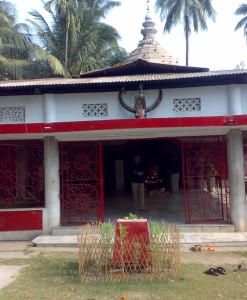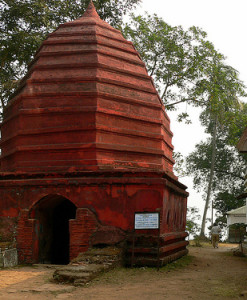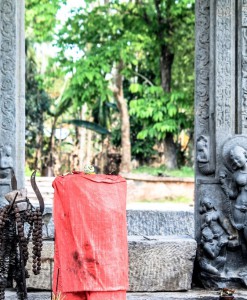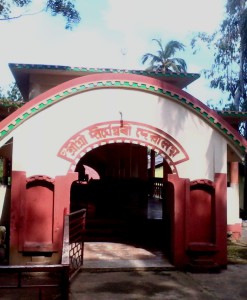No products in the cart.
Around 30 km to west of Guwahati, in the town of Hajo, is situated one of the most sacred pilgrimage spot in Assam – Hayagriva Madhava Temple. Highly revered by the Hindus as well as the Buddhists, the temple enshrines an image of Lord Vishnu, which resembles the image of Lord Jagannath at Puri (Orissa). The temple is also considered as a major pilgrimage spot by Buddhist Lamas and Bhutiyas who follow Buddhism. They believe that Lord Buddha acquired Nirvana or Moksha in this place and that the image inside the temple is that of the Lord.
Hayagriva Madhava Temple, Guwahati;
Hayagriva Madhava Temple, located on a hill called Manikuta, is dedicated to Lord Vishnu. Hayagriva (Vishnu with a horse head) is one of the incarnations of Lord Vishnu. Legend has it that once, two demons, Madhu and Kaitabha, took away the Vedas from Lord Brahma, while he was on the lotus. Upset and offended by this, Brahma awoke Lord Vishnu, while he was sleeping and requested for the recovery of the Vedas. It was then that the Lord assumed the form of Hayagriva, went to Rasatala (where the demons had kept the Vedas), recovered them and gave them back to Brahma.
After recovering the Vedas, Lord Vishnu went to the north-east corner of the great sea and slept in His Hayagriva form. While he was sleeping, the demons came back and challenged the Lord to a fight. A big war commenced and the demons were finally killed by the Lord. According to another legend, Hayagriva was the name of the demon that stole the Vedas from Brahma and was finally killed by Vishnu. However, the first legends find much more popularity than the latter.
There are a number of legends regarding the incarnation of the Hayagriva Madhab. It has three versions while the local legend relates the Avatar to the epic of Mahabharata. It claims that when Vishnu was sleeping and Lord Brahma was on the lotus, two demons Madhu and Kaitabha took away the Vedas from Brahma and went to Rasatala. Lord Brahma, being much aggrieved, awoke Vishnu, and requested for the recovery of the Vedas. Vishnu assumed the form of Hayagriva and recovered the Vedas, and handed over to Brahma. He then went to sleep in the northeast in the form of Hayagriva when he was challenged by the demons for a war in which they were killed.
According to Matsya Purana, the Hayagriva Avtara of Vishnu was similar to the Matsya avatar which he took when the worlds were burnt down. Vishnu in the form of a horse recompiled the four Vedas, Vedangas, etc., the Devi Bhagavata and the Skanda Purana in its Dharmranya Khanda.
According to Kalika Purana Vishnu took the form of Hayagriva to kill the Fever-Demon, Jvarasura in the Manikuta hill and lived there for the benefit of men, gods and Asuras. He then took a sacred bath to avoid all vices which come in the form of diseases.
Along with this there is the city of Apunarbhava where Janardana Hayagriva resided. This place is full of gardens, temples and parks which are known for its beauty. It was believed that a demon named Hayagriva also resided in the city, who was killed by the Lord Vishnu. Along with this the place is also considered scared by the Buddhists. Manikuta is considered as holy by the Buddhists of Tibet and Buddhists of the neighbouring Bhutan hills who come down during the cold season to worship the god whom they regard as Mahamuni Buddha. While the original temple of Hayagriva-Madhava was destroyed, it was rebuilt by King Raghudeva Narayana, son of Sukladhwaj, in Saka 1505 (1583 AD).
The entire Hayagriva Madhava Temple is divided into three parts – the basement, the center and the Sikhara. The Sikhara has a pyramid like structure, which continues right up to an apex point. This entire structure rests over enormous brick pillars and is considered as an addition to the original structure of the temple, possibly constructed by the Koch king of the 15th era, King Naranarayan. There is a huge entrance hall made of bricks and measuring about 40 feet by 20 feet. A flight of stone steps leads you into the 14 sq ft Garbhagriha, which contains image of the residing deity and its podium.
The entrance to this shrine is made of four blocks of granite and is about 10 feet high and 5 feet wide. This opens into an anteroom, made of stone and about 10 feet by 10 feet. Two stone screens, cut in the form of lotus flowers, lay on either side of the room with apertures for the entry of light and air. The exterior of the temple has huge sculptured figures, representing the 10 Avataras, with Buddha as the ninth. Hayagriva Temple was initially demolished by Kalapahar and rebuilt by the Koch King Raghudev in 1543. Just close to this temple, a smaller temple was constructed by the Ahom King Pramatta Singh, where Doul (or Holi) is celebrated on a large scale every year.
By Road: One can easily reach the Hayagriva Madhava Temple by road from any part of Assam. One can also hire a taxi to reach the temple & also auto services are easily accessible.
By Rail: The Temple is well connected through nearest Guwahati Rail Way Station (33.2 km)
to major cities railway stations like Delhi, Agra, Mumbai, Chennai, Ajmer, Pali, Jaipur, Ahmedabad.
By Air: he Temple can be reached through nearest Guwahati Airport (37.3 Km) which is well connected with regular domestic flights to Delhi, Mumbai, Hyderabad, Bangalore, Chennai and other metropolitan cities.
The Temple opens at 6:00 AM in the morning and remains open until 9:00 PM. During this period major rituals of Lord Vishnu are performed. Archana, Abhishekam and Arathi are the daily rituals performed in the temple. The major attraction of this shrine is the festival of Holi that is celebrated on a grand scale.



